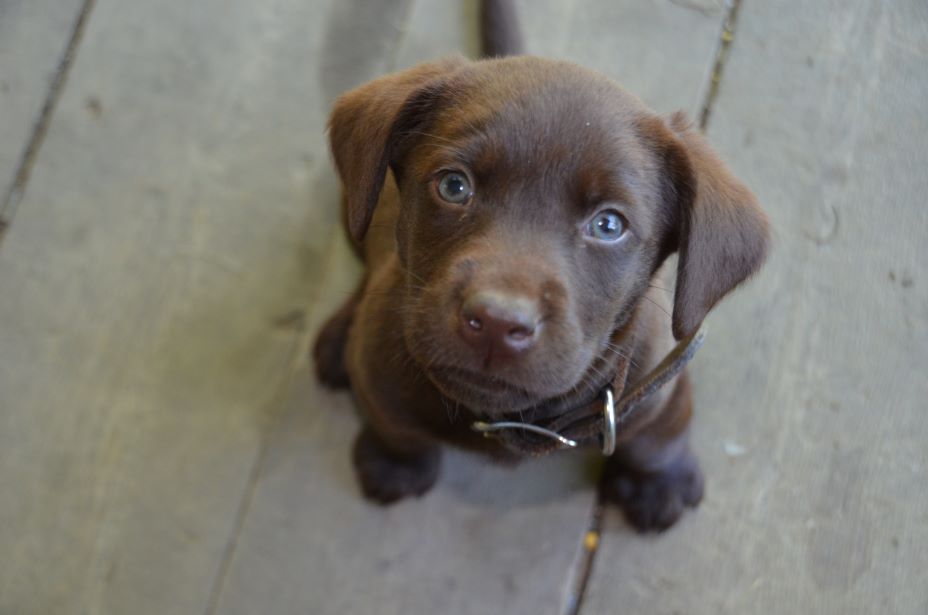Bringing home a new puppy is an exciting and rewarding experience. As a responsible pet owner, one of your primary responsibilities is to provide proper training for your furry friend. Puppy training sets the foundation for good behavior, socialization, and a harmonious bond between you and your new companion. Our vets put together some tips and tricks for training a new puppy so you can make the most of your time with your dog.
Here are some tips to help you start training your new puppy!
Start Training Your New Puppy Early
Begin training your puppy as soon as you bring them home. Puppies are like sponges, eager to learn and absorb new information. Early training establishes good habits and prevents the development of unwanted behaviors.
Here are some tips for training a new puppy:
- Socialization is vital for a well-rounded and well-behaved puppy. Introduce your puppy to various environments, people, animals, and experiences from a young age. This helps them become comfortable and confident in different situations, reducing the likelihood of fear or aggression later in life.
- Consistency is key in puppy training. Use the same commands, rewards, and training techniques to avoid confusion. Be patient with your puppy, as learning takes time. Keep training sessions short and fun, and always end on a positive note.
- Arrange playdates or enroll your puppy in puppy socialization classes to interact with other dogs in a controlled and supervised setting. This helps them develop proper social skills, learn canine body language, and build positive relationships with other dogs.
- Avoid using punishment or physical force as a training method. Punishment can create fear and anxiety, hindering the learning process and damaging the bond between you and your puppy. Focus on positive reinforcement and redirection instead.
- If you encounter challenges or feel overwhelmed, don’t hesitate to seek guidance from a professional dog trainer or behaviorist. They can provide expert advice, personalized strategies, and additional support to address specific training issues.
Methods for Training a New Puppy
Puppy Toys: Stimulating Play and Learning
Puppy toys are essential for keeping your furry friend entertained, engaged, and mentally stimulated. They provide an outlet for their natural instincts and help redirect their chewing behavior away from household items.
Choose a variety of toys that offer different textures, sizes, and functionalities. For example, rubber chew toys, interactive puzzle toys, plush toys, and treat-dispensing toys are popular options. Experiment with different toys to discover what your puppy enjoys most and rotate them regularly to maintain their interest.
Remember to prioritize safety by selecting toys that are appropriate for your puppy’s size and age, and always supervise playtime to prevent any accidents or swallowing of small parts.
Obedience Training: Building a Strong Foundation
Obedience training is crucial for developing good behavior and establishing a strong bond with your puppy. It teaches them to understand and respond to basic commands, making daily interactions more enjoyable for both of you.
Start with simple commands like “sit,” “stay,” and “come.” Use consistent verbal cues and hand signals, and reward your puppy with treats, praise, or play when they respond correctly. Gradually increase the level of difficulty by adding new commands and practicing in different environments.
Keep training sessions short and positive, using repetition and consistency to reinforce desired behaviors. Over time, your puppy will learn to respond reliably to commands and become a well-mannered companion.
Positive Reinforcement: Encouragement and Rewards
Positive reinforcement is a powerful training technique that focuses on rewarding and encouraging desired behaviors rather than punishing unwanted behaviors. It helps your puppy associate good behaviors with positive experiences, making them more likely to repeat those behaviors.
For example, when your puppy sits when asked, immediately offer praise, treats, or a favorite toy as a reward. This positive association strengthens the connection between the command and the desired behavior. By consistently using positive reinforcement, you create a supportive and enjoyable learning environment for your puppy. They will become more eager to learn and please you, fostering a strong and trusting bond between you both.
Leash Training: Walking in Harmony
Leash training is essential for a safe and enjoyable walking experience with your puppy. Start by introducing your puppy to a properly fitted leash and harness. Begin indoors or in a secure area, allowing them to become comfortable with the leash and its weight. Once they are accustomed to it, gradually transition to outdoor walks. Use positive reinforcement, rewarding your puppy for walking calmly beside you without pulling.
Practice loose leash walking, where the leash has a slight slack. Remember to be patient, as leash training takes time and consistency. With practice, your puppy will learn to walk politely on a leash, making outings a pleasant experience for both of you.
Housebreaking: Establishing Proper Bathroom Habits
Housebreaking, or potty training, is an essential aspect of puppy training. Start by establishing a consistent schedule for bathroom breaks, taking your puppy outside frequently, especially after meals, naps, and playtime. Watch for signs that they need to go, such as circling, sniffing, or restlessness.
When your puppy eliminates in the appropriate area, reward them with praise, treats, or a designated bathroom command. If accidents happen indoors, clean them up without scolding your puppy, as punishment can create confusion and fear. Instead, focus on reinforcing positive behaviors and providing consistent guidance. With patience, consistency, and a positive approach, your puppy will learn to understand where and when they should eliminate.
Commands: Establishing Clear Communication
Teaching your puppy basic commands is fundamental for their safety, well-being, and ability to interact with others. Start with simple commands like “sit,” “stay,” “down,” and “come.” Use consistent verbal cues accompanied by clear hand signals. Break down each command into smaller steps and reward your puppy for successfully following each step.
For example, when teaching the “sit” command, start by luring your puppy into a sitting position with a treat. As they sit, say the command “sit” and immediately reward them with praise and the treat. Gradually decrease the lure until your puppy responds to the verbal cue alone.
Practice these commands in different environments and with increasing distractions to reinforce their understanding and responsiveness.
Clicker Training: Effective Communication and Timing
Clicker training is a popular method that utilizes a handheld device called a clicker to mark desired behaviors. The clicker makes a distinct sound that signals to your puppy that they have performed the correct behavior. By pairing the clicker sound with immediate rewards, such as treats or praise, your puppy learns to associate the sound with positive outcomes. This precise timing allows for clear communication and enhances the speed of learning.
Start by “charging” the clicker by clicking and then offering a treat. Then, use the clicker to mark and reward desired behaviors during training sessions. With consistent use, your puppy will quickly understand the connection between the clicker, their actions, and the reward, making training more efficient and enjoyable.
Behavior Training: Addressing Unwanted Behaviors
Behavior training focuses on addressing and modifying unwanted behaviors in your puppy. Common behavioral issues include jumping, chewing on furniture, excessive barking, or pulling on the leash. Identify the specific behaviors you wish to change and implement positive reinforcement techniques to redirect your puppy’s behavior. For example, if your puppy jumps on people, teach them an alternative behavior, such as sitting or offering a paw, and reward them for performing that behavior instead.
Consistency, patience, and positive reinforcement are key to effectively addressing unwanted behaviors. Additionally, seeking guidance from a professional dog trainer or behaviorist can provide valuable insights and strategies for managing and modifying specific behavioral issues.
Good Luck with your Puppy Training!
Remember, training a new puppy requires time, patience, and consistency. Celebrate small victories and remain positive throughout the process. Each training session is an opportunity to strengthen the bond between you and your puppy while shaping them into a well-behaved and happy companion. With dedication and a positive approach, you will build a strong foundation of training that will benefit your puppy for years to come.




